touching reverberations
tina omayemi reden
with Melody Chua, Martha Mutapay, Tapiwa Svosve, Ursula Vogel
2.12.2022–14.1.2023
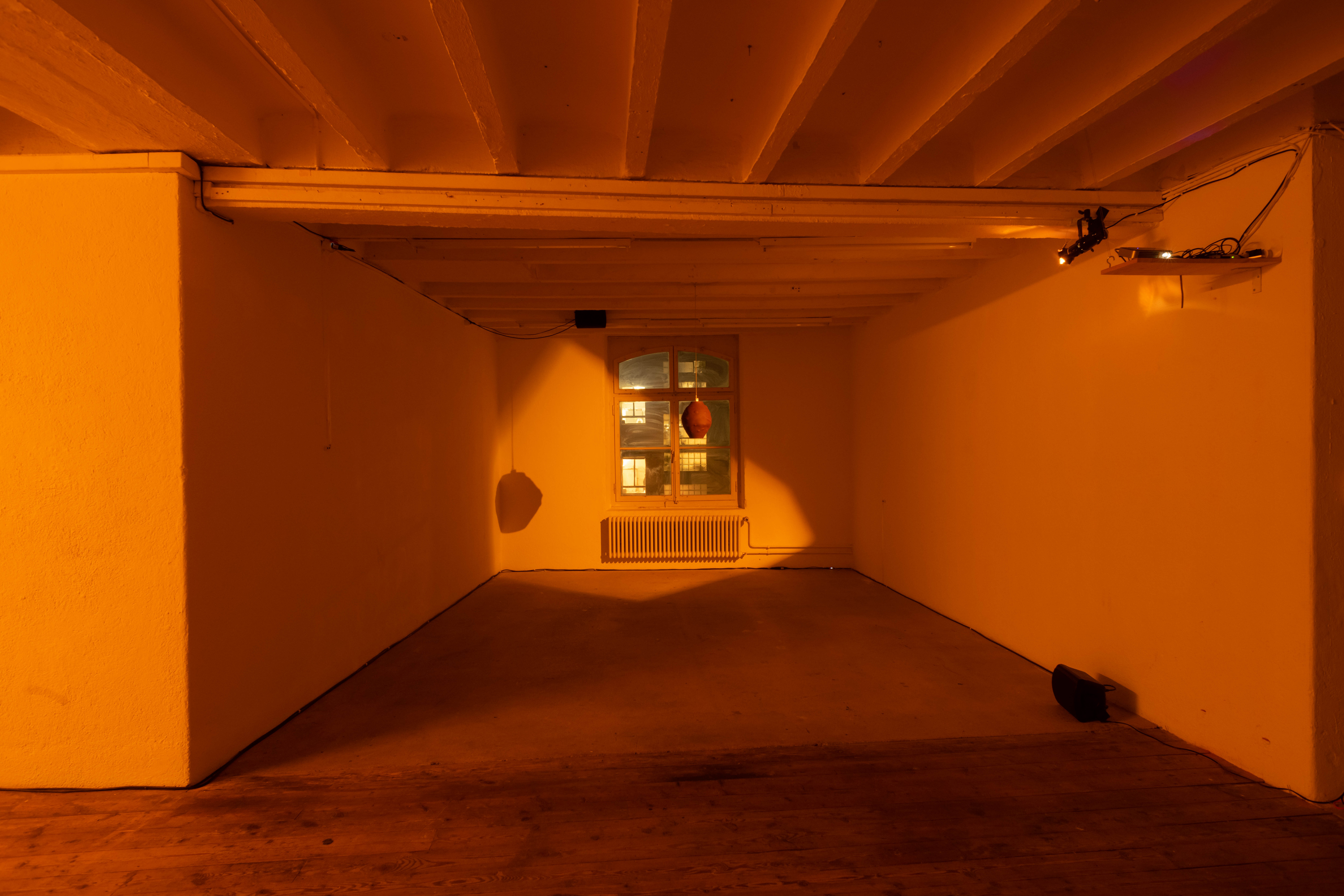
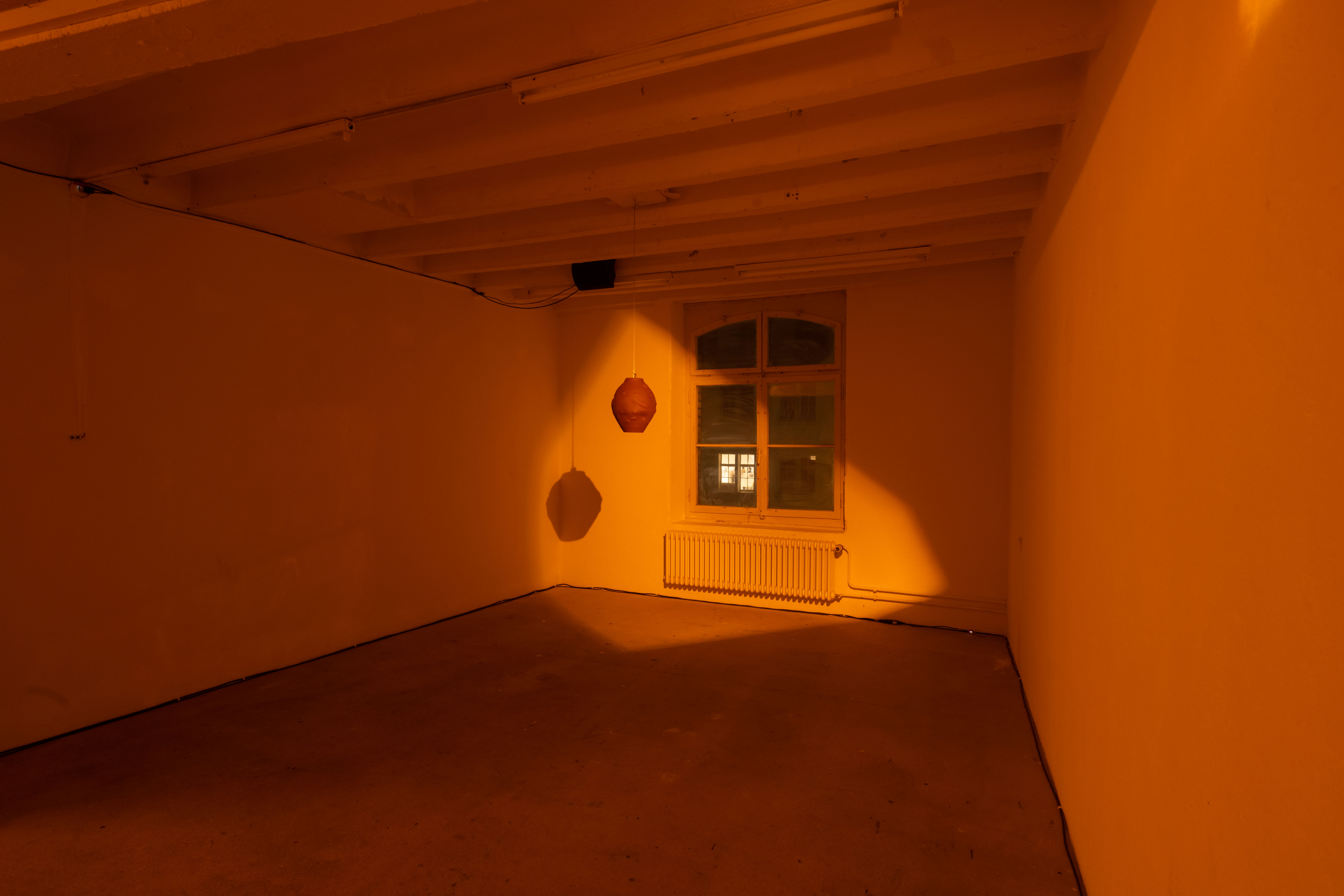

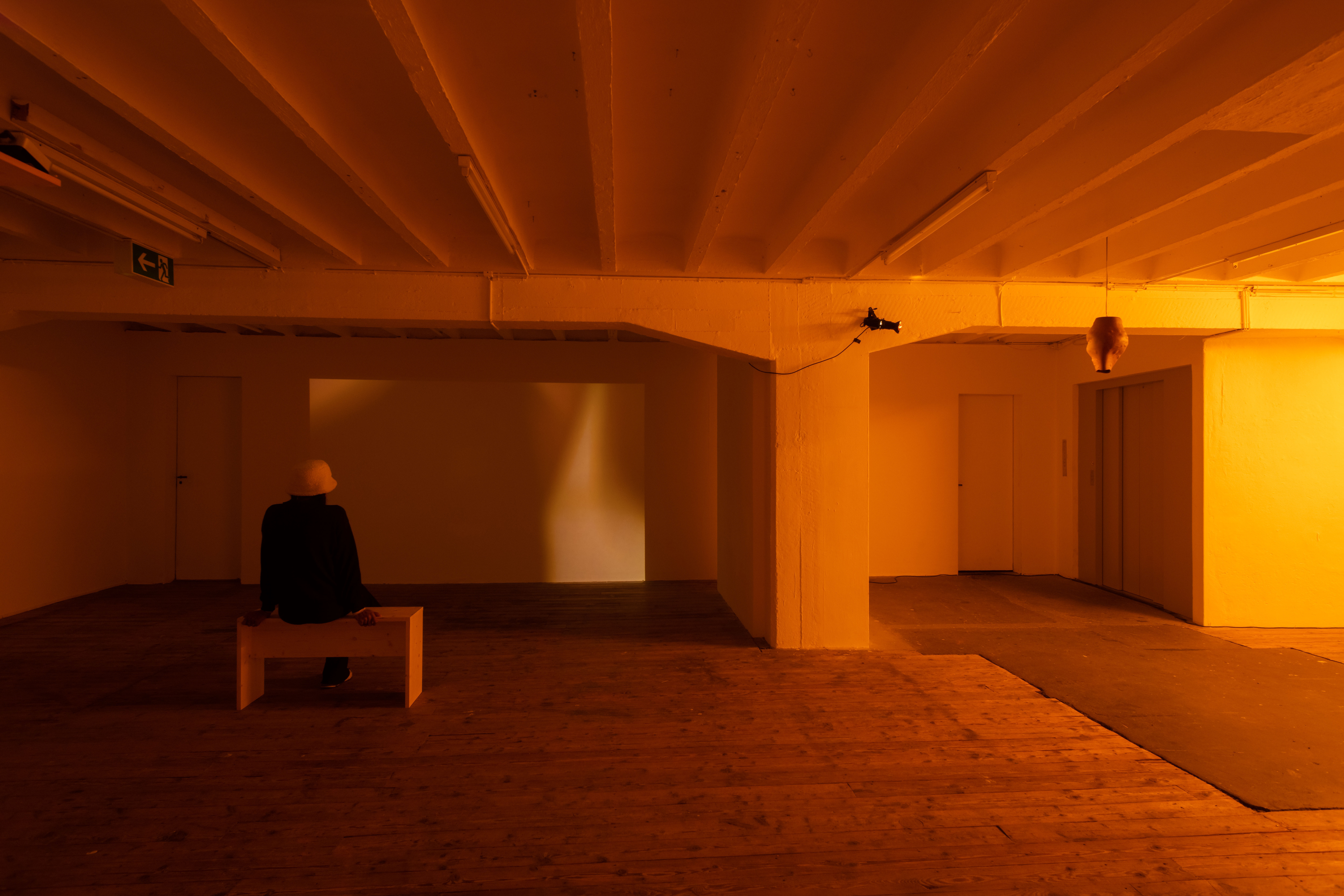
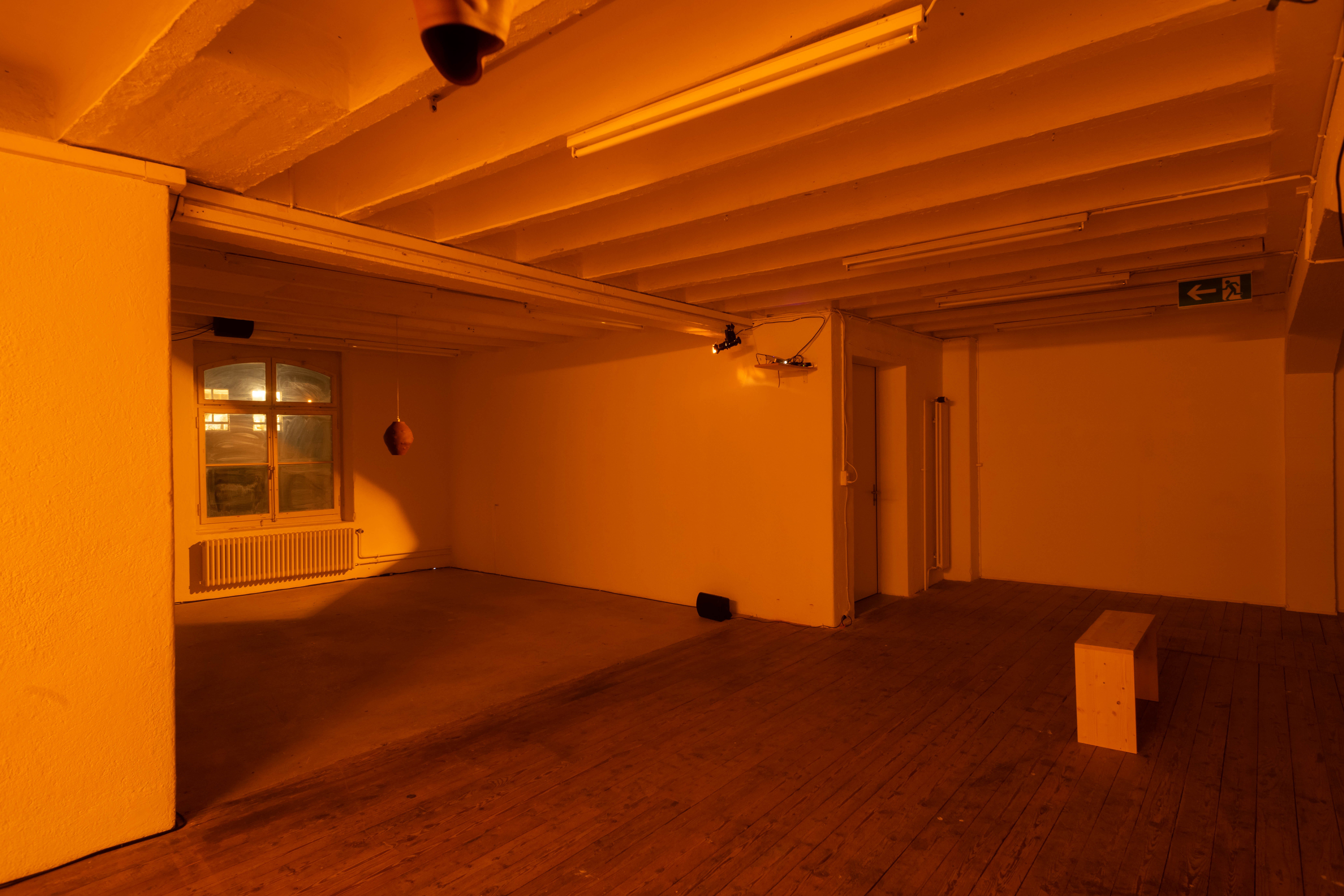
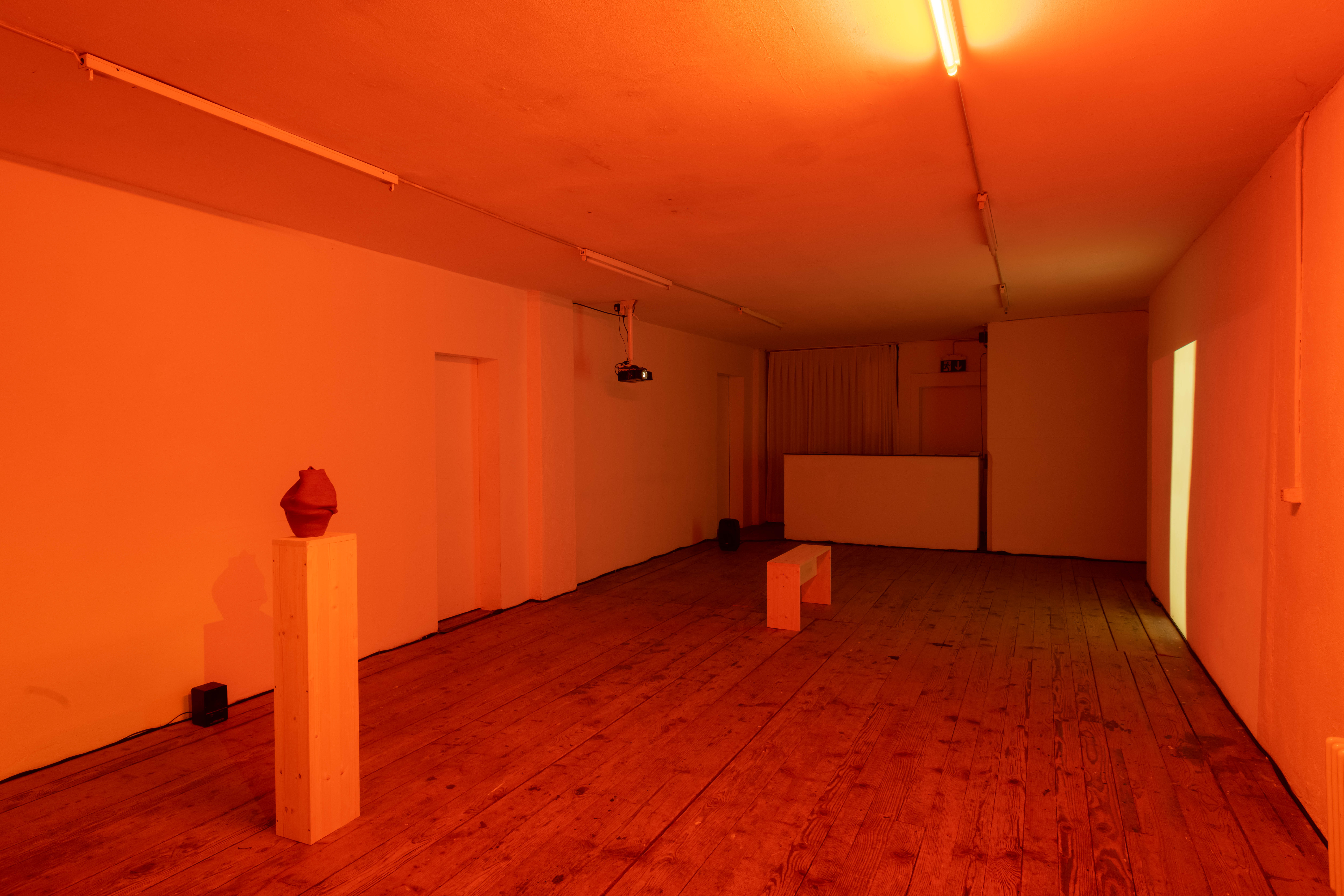
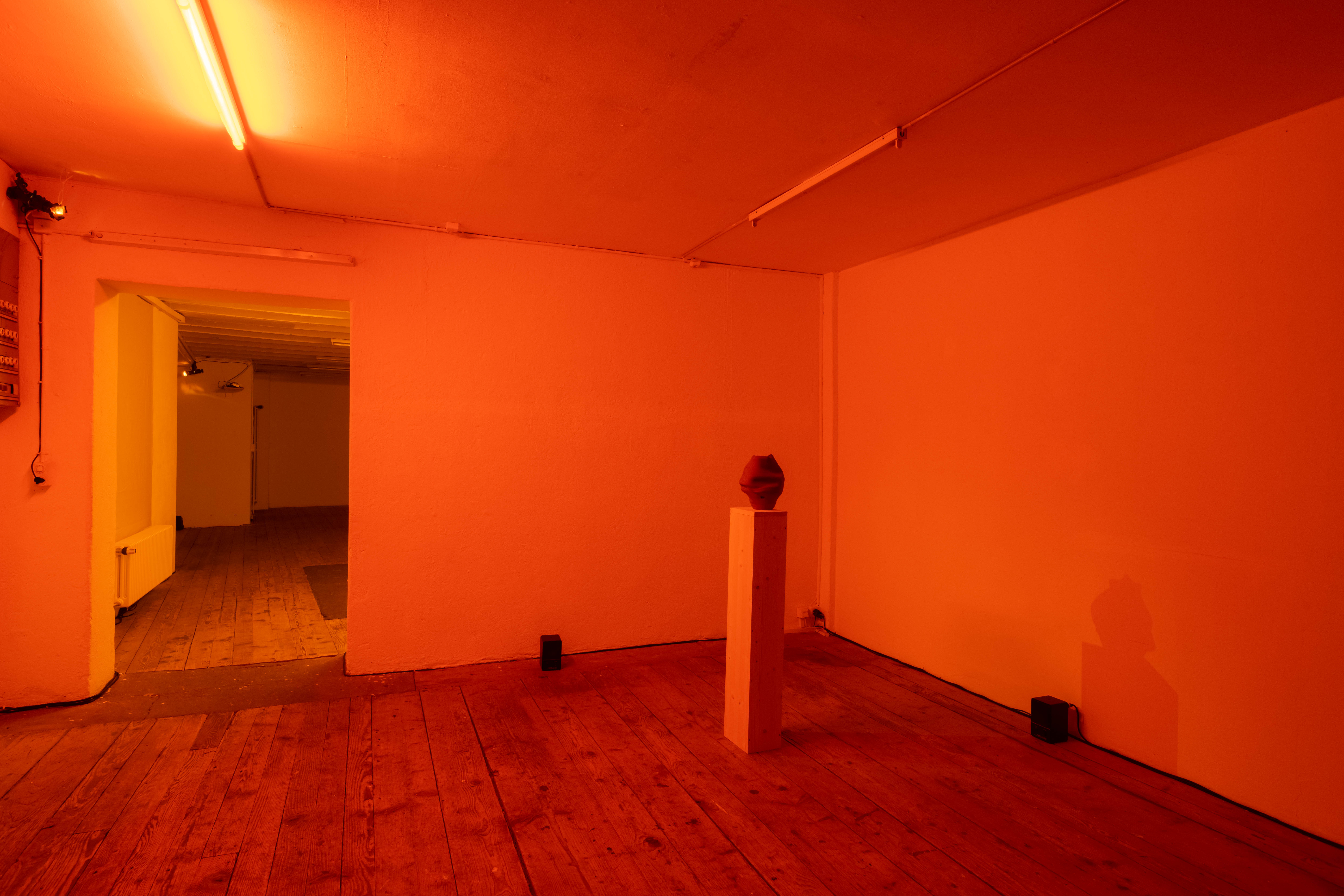
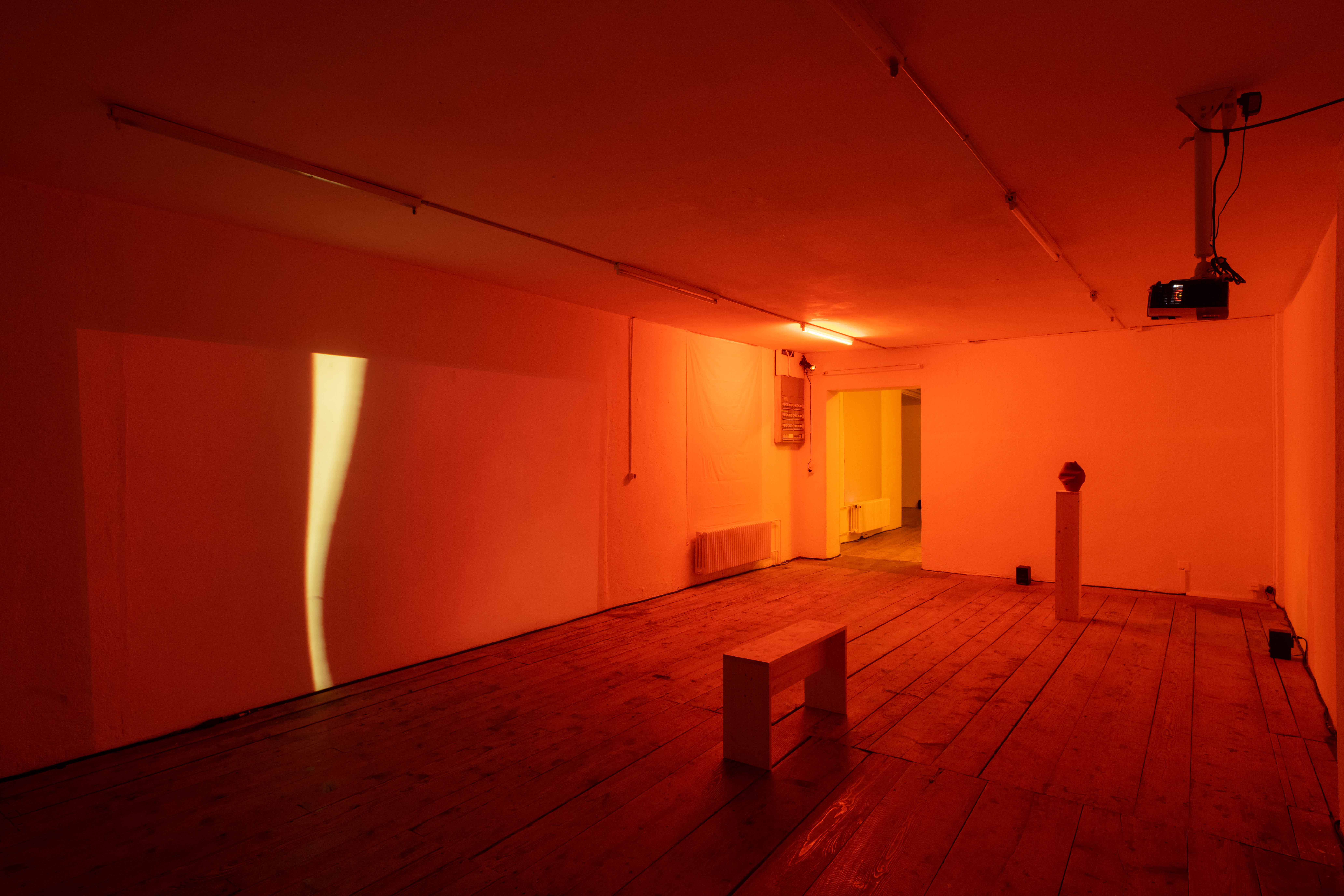
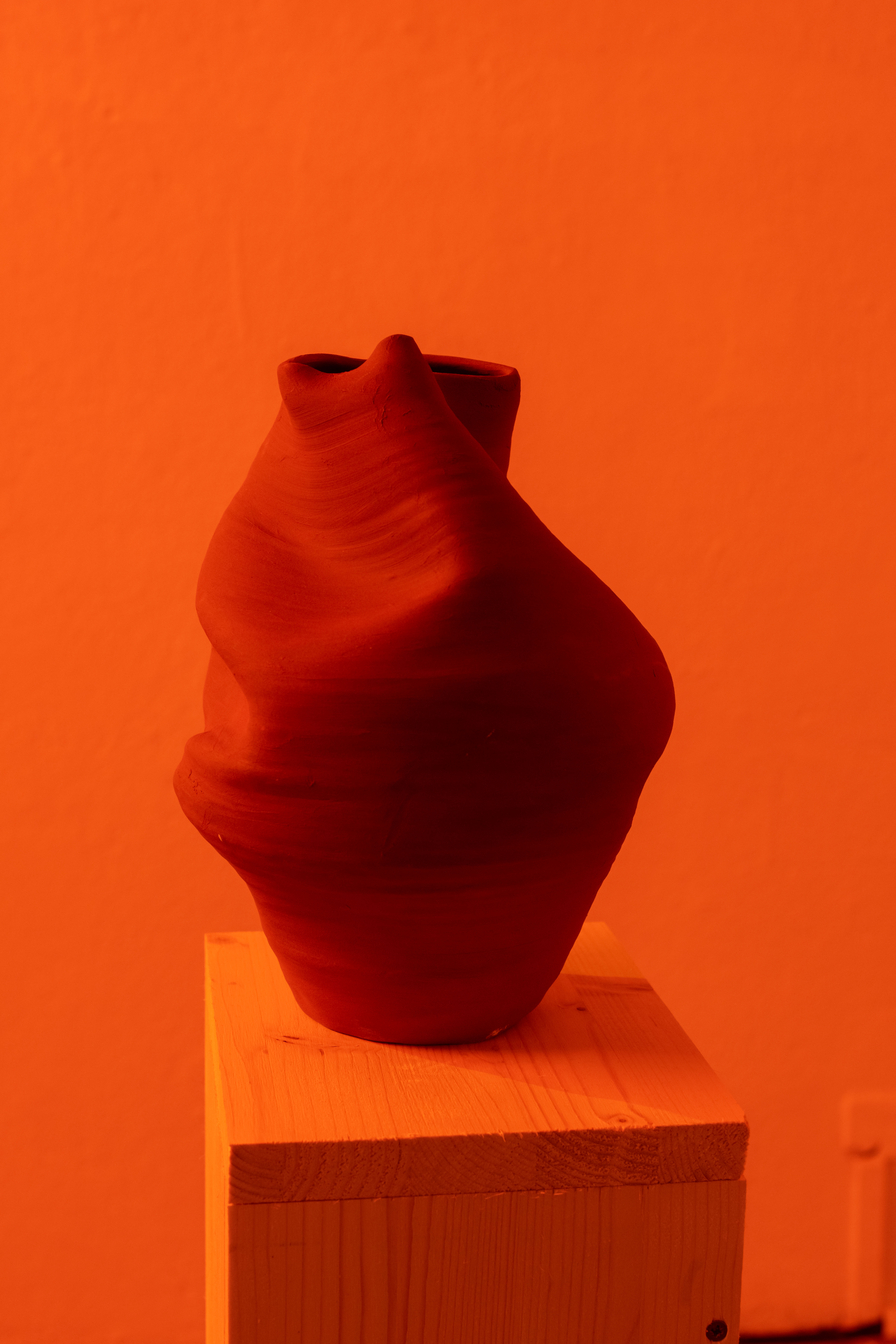
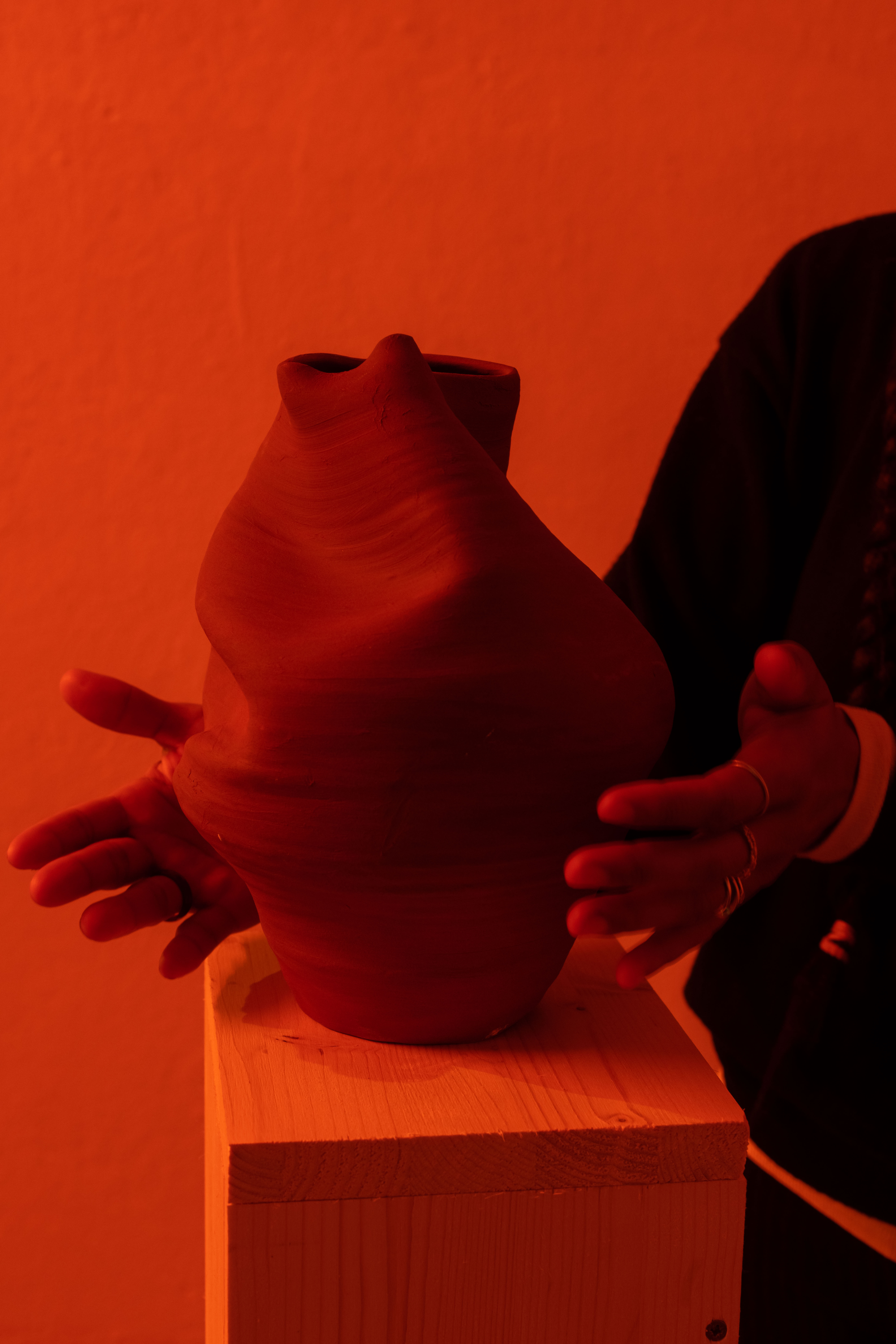
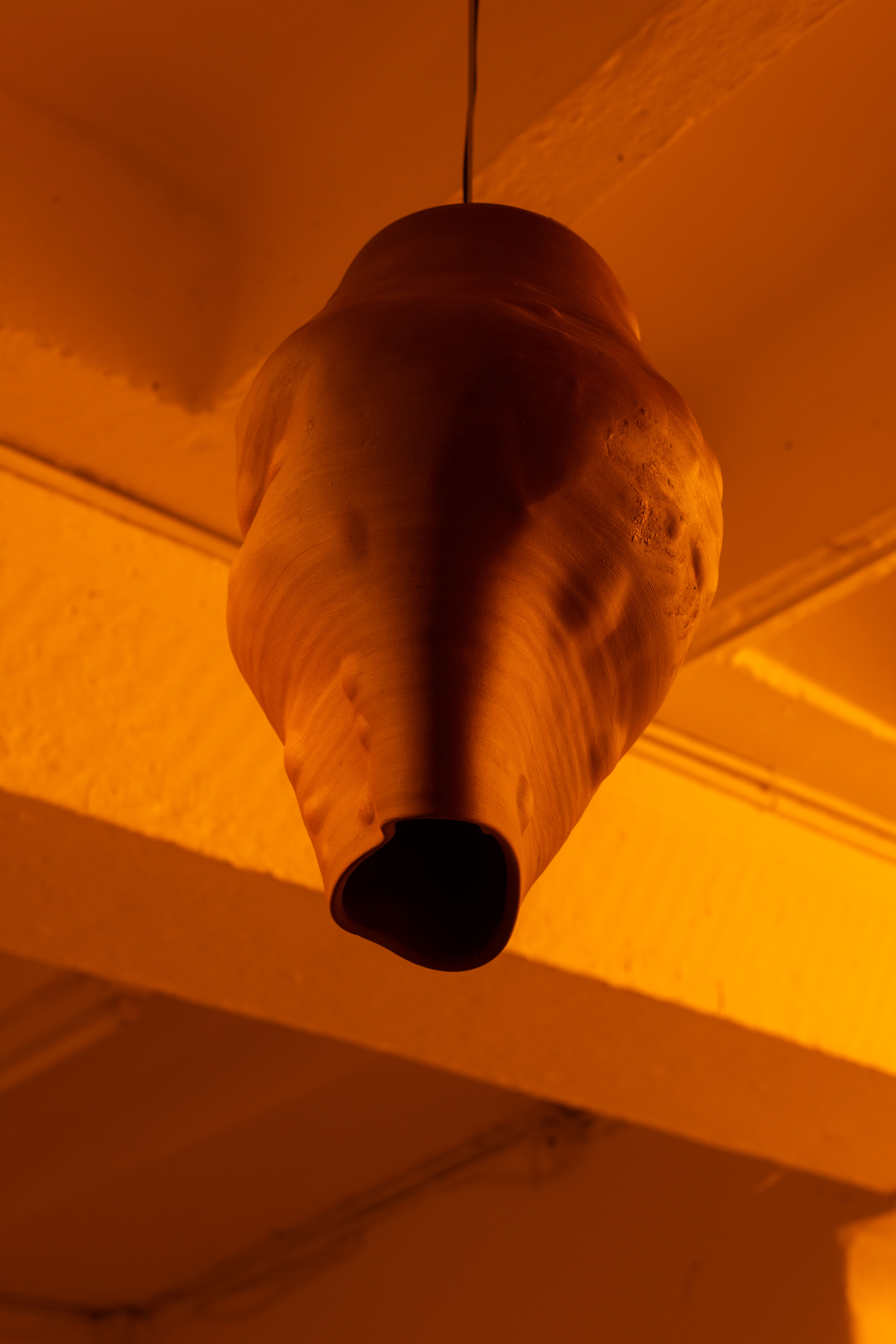
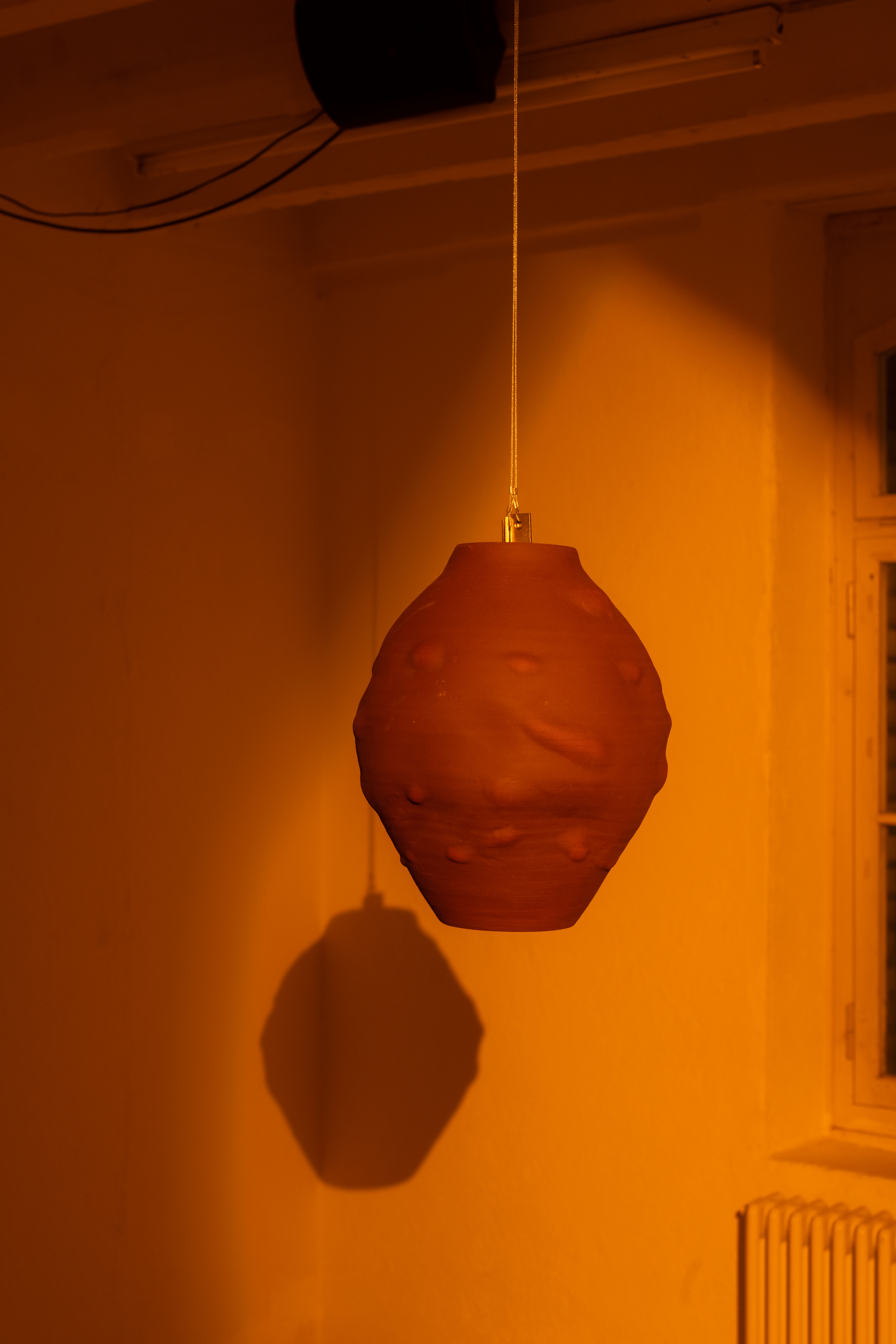
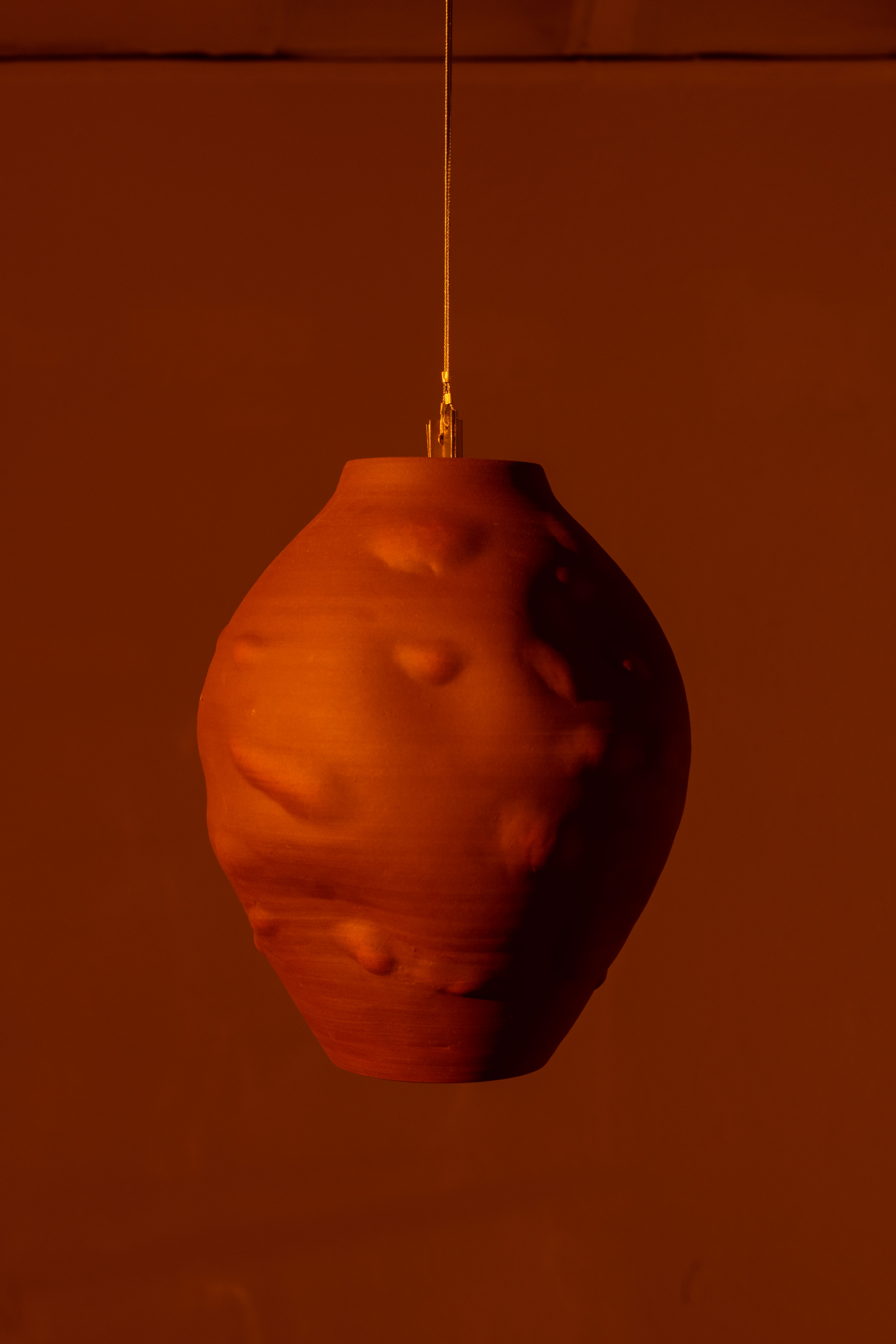
Fotos: Flavio Karrer
„My body has the capacity to sense immense pleasure, and as I get older I keep intentionally expanding my sensual awareness and decolonizing it so that I can sense more pleasure than capitalism believes in“ adrienne maree brown in Pleasure Activism (2019)
Wann berühren wir? Werden wir nicht ständig von Stimmen und der Anwesenheit Anderer berührt und sei es nur durch Schallwellen? Berührungen, auch indirekte, lustvolle oder ungewollte, schreiben sich ein, machen uns zu den polyphonen Wesen, die wir sind, daran erinnernd, dass das Andere immer auch ein Teil des Selbst ist. Deshalb ist Berührung die intime Schwelle, wo das Politische beginnt. Was, wenn sich Intimität und Zärtlichkeit als radikale Mittel erweisen, um Widerstand zu leisten?
In Touching Reverberations bewegt sich die transdisziplinäre Künstlerin tina omayemi reden in einer Annäherung um die Praxis des aktiven Zuhörens und, wie schon in ihren Arbeiten der letzten Jahre, geht es um ein Zuhören im weitesten Sinne. Immer ist es auch eine Entscheidung, wohin sich die Aufmerksamkeit neigt. Dass Zuhören multisensorisch sein kann, wird gerade im aktuellen Arbeitszyklus von tina o. reden deutlich. Körper begegnen sich, geben Impulse, atmen miteinander. Sie wölben und senken, orientieren sich an- und durcheinander. Radikale Zärtlichkeit meint nicht sanftes Streicheln, sie entsteht zwischen gesamtkörperlichem Zuhören, einer mentalen Wach- und Achtsamkeit.
Im Aussellungsraum beeinflusst das Publikum durch Bewegung um die Keramikgefässe die Klangtexturen im Raum. Die Gefässe stehen für und sind gleichzeitig Resonanzkörper, mit denen wir in Verbindung treten können. Die Klänge vermischen sich, dringen durch die Räume, beeinflussen das Gesehene und die eigene Körperwahrnehmung. In den beiden Videoarbeiten sind Körper in nicht-sprachlichem Austausch zu sehen, auf der Suche nach einer Zärtlichkeit im Zuhören.
Von nicht-menschlichen Akteuren lernend, erinnert die Schwarze Feministin Alexis Pauline Gumbs in Undrowned: Black Feminist Lessons from Marine Mammals (2020) wie Sehkühe im Ozean über weite Entfernungen ihre Stimmen durch Schallwellen transportieren, um mit Familienmitgliedern zu kommunizieren. Dies passiert auch über Berührung oder indem sie ihren Atem miteinander koordinieren. Gumbs zufolge gibt es ein ebenso starkes menschliches Begehren nach einer Welt des Gehört-Werdens, nach Schutz, Spiel und danach, durch die Aufmerksamkeit Anderer genährt zu werden.
Touching Reverberations ist eine Kollaboration, wie es die Arbeiten von tina o. reden meistens sind. Die Klanginstallation entwickelte sie zusammen mit der Künstlerin Melody Chua. Chua untersucht in ihrer Arbeit elektronische Interfaces als Vehikel für narrativen Ausdruck und sieht sie gleichzeitig als Möglichkeit, die normative Gegenwart in Verbindung zu Technologie zu destabilisieren. Chua arbeitet oft in Improvisation-Settings, wo sie mit Sensoren und algorithmisch programmierten «Improvisations-Maschinen» arbeitet. Die Klangstrukturen für die Ausstellung sind teils von Chua und teils in Zusammenarbeiten zwischen Tapiwa Svose und tina o. reden entstanden. tina und Tapiwa entwickeln seit vielen Jahren Arbeiten und Performances zusammen. Der Musiker und Theoretiker Tapiwa Svosve, der sich zwischen extremen Avantgardismus, Free Jazz und Noise bewegt, setzt sich in seiner multidisziplinären Praxis unter anderem mit Stille, Negativräumen und dem Zusammenspiel von Körper und Instrument auseinander. Die Keramikgefässe wurden zusammen mit der Keramikdesignerin Ursula Vogel kreiert, die oft mit Künstlerinnen kollaboriert. Für die Videos arbeitete tina o. reden eng mit Tänzerin, Choreographin und Schauspielerin Martha Mutapay zusammen. Mutapay schafft durch den Einsatz von Tanz, Theater und experimentellen Performances ausdrucksstarke Konzepte, die nuancierte Verkörperungen evozieren und klangliche, narrative und visuelle Metaphern mit Intensität und Humor verarbeiten.
Kuratiert von Julia Künzi. Text von Caroline Ann Baur
Englisch:
„My body has the capacity to sense immense pleasure, and as I get older I keep intentionally expanding my sensual awareness and decolonizing it so that I can sense more pleasure than capitalism believes in“ adrienne maree brown in Pleasure Activism (2019)
When do we touch? Don’t we get constantly touched by voices and the presence of others, even if only by sound waves? Touch, even indirect, pleasurable, or unwanted, inscribes itself, turning us into the polyphonic beings that we are, reminding us that the other is always also a part of the self. Therefore, touch is the intimate threshold where the political begins. What if intimacy and tenderness prove to be radical means to resist?
In the exhibition Touching Reverberations, transdisciplinary artist tina omayemi reden moves around the practice of active listening and, as in her works of recent years, about listening in the broadest sense. It is always also a choice of where the attention leans. The fact that listening can be multisensory becomes apparent in the current work cycle of tina o. reden. Bodies meet, give impulses and breathe with each other. They arch and sink, orient themselves to and against each other. Radical tenderness does not mean gentle caressing, it arises between whole-body listening, mental awareness and attentiveness.
In the exhibition space, the audience influences the sound textures by moving around the ceramic vessels. They are and metaphorically stand for resonating bodies, with which people can connect. The sounds intermingle, permeate the spaces, and influence what we see and our own bodily perception. In the two video works, bodies are seen in non-linguistic exchanges, searching for a tenderness in listening.
Learning from non-human actors, Black feminist Alexis Pauline Gumbs recalls in Undrowned: Black Feminist Lessons from Marine Mammals (2020) how manatees in the ocean transport their voices over long distances through sound waves to communicate with family members. This happens as well through touch or by coordinating their breathing with each other. According to Gumbs, there is an equally strong human desire for a world of being heard, for protection, for play, and for being nurtured by the attention of others.
Touching Reverberations is a collaboration, as tina o. reden›s works usually are. She developed the sound installation together with artist Melody Chua. Chua›s work explores electronic interfaces as vehicles for narrative expression, while also seeing them as opportunities to destabilize the normative present in relation to technology. Chua often works in improvisational settings, where she works with sensors and algorithmically programmed «improvisation machines.» The sound structures for the exhibition were created partly by Chua and partly in collaborations between Tapiwa Svosve and tina o. reden. tina and Tapiwa have been developing works and performances together for many years. Musician and theorist Tapiwa Svosve, who moves between extreme avant-gardism, free jazz, and noise, explores silence, negative space, and the interplay of body and instrument in his multidisciplinary practice. The ceramic vessels were created with ceramic designer Ursula Vogel, who often collaborates with artists. For the videos, tina o. reden worked closely with dancer, choreographer and actress Martha Mutapay. Using dance, theater, and experimental performance, Mutapay creates expressive concepts that evoke nuanced embodiments and process sonic, narrative, and visual metaphors with intensity and humor.
Curated by Julia Künzi. Text by Caroline Ann Baur.